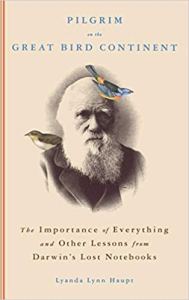
The Jefferson Land Trust Natural History Society book club will meet on Monday, August 26, 2019, 3:30 – 5:00, to discuss Mountain in the Clouds by Bruce Brown. Let’s gather at 3:15 at the lot across from San Juan Taqueria; from there we can carpool to Ilahee Preserve.
Called “profound and moving” by the Washington Post, this environmental classic launched the wild salmon movement and inspired the removal of the dams on the Elwha River, the largest dam removal project in human history. The book centers on the rivers of the Olympic Peninsula, and although written in the 1980s, is as timely as when it was first written. A new preface was included in the 1995 publication.
If you’ve ever wondered “where did all the wild salmon go?” then this is a must-read for you.


 On Monday, May 20, the JLT Natural History Society book club will discuss Eager by Ben Goldfarb.
On Monday, May 20, the JLT Natural History Society book club will discuss Eager by Ben Goldfarb. 